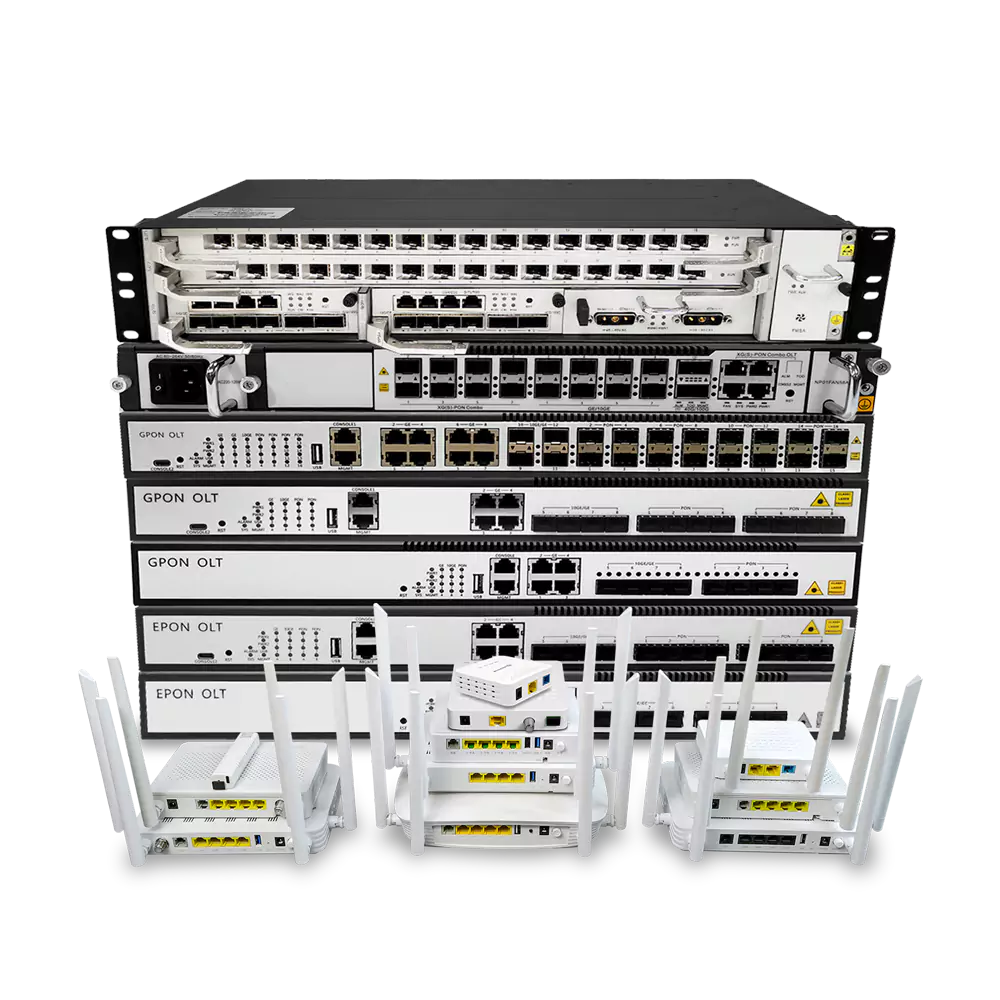10GBASE refers to a family of Ethernet physical layer (PHY) standards that support a data transmission rate of 10 Gbps (10 Gigabits per second). It is part of the IEEE 802.3ae standard, defining various physical implementations of 10 Gigabit Ethernet.
Name Breakdown
- 10G: Indicates the 10 Gbps data transmission rate.
- BASE: Stands for baseband transmission, meaning the full channel bandwidth is used for Ethernet signals without modulation.
Common 10GBASE Standards
Depending on the transmission medium and distance requirements, several 10GBASE variants exist:
1. Fiber Optic Transmission
- 10GBASE-SR:
- Uses multimode fiber (MMF) and 850 nm wavelength lasers.
- Suitable for short-range transmission (up to 300 meters with OM3 fiber, 400 meters with OM4 fiber).
- Widely used in data centers and server rooms.
- 10GBASE-LR:
- Uses single-mode fiber (SMF) and 1310 nm wavelength lasers.
- Supports longer distances (up to 10 km).
- Ideal for campus networks or metropolitan area networks (MANs).
- 10GBASE-ER:
- Uses single-mode fiber and 1550 nm wavelength lasers.
- Supports even longer distances (up to 40 km).
- 10GBASE-ZR (non-standard):
- Extends the range to 80 km, often using DWDM (Dense Wavelength Division Multiplexing) technology.
2. Copper Transmission
- 10GBASE-T:
- Uses shielded twisted-pair copper cables (e.g., Cat6a or Cat7).
- Supports up to 100 meters.
- Commonly used for short-range connections between servers, switches, and other devices.
- 10GBASE-CX4 (early standard):
- Uses copper cables, typically for very short distances (under 15 meters).
- Largely replaced by smaller and more efficient SFP+ modules.
3. Backplane Transmission
- 10GBASE-KR:
- Designed for connections over backplanes in printed circuit boards (PCBs).
- Often used within switches and routers.
Applications
- Data Centers: For high-speed connections between servers and storage devices.
- Enterprise Networks: To upgrade traditional 1G networks for better performance.
- Metropolitan and Wide Area Networks (MAN/WAN): For backbone transmission over long distances.
- High-Performance Computing (HPC): For low-latency, high-throughput cluster communication.
Advantages
- High-speed data transmission to meet modern network demands.
- Flexibility with multiple media types and distance options.
Limitations
- Higher deployment costs, especially for fiber optics and optical modules.
- Greater power consumption compared to 1G standards, necessitating better cooling solutions.
Conclusion:
10GBASE is a comprehensive family of Ethernet standards designed to support 10 Gigabit transmission over a variety of media, from short-range connections in data centers to long-distance links in backbone networks. It provides the flexibility and performance needed for modern high-speed networking.

